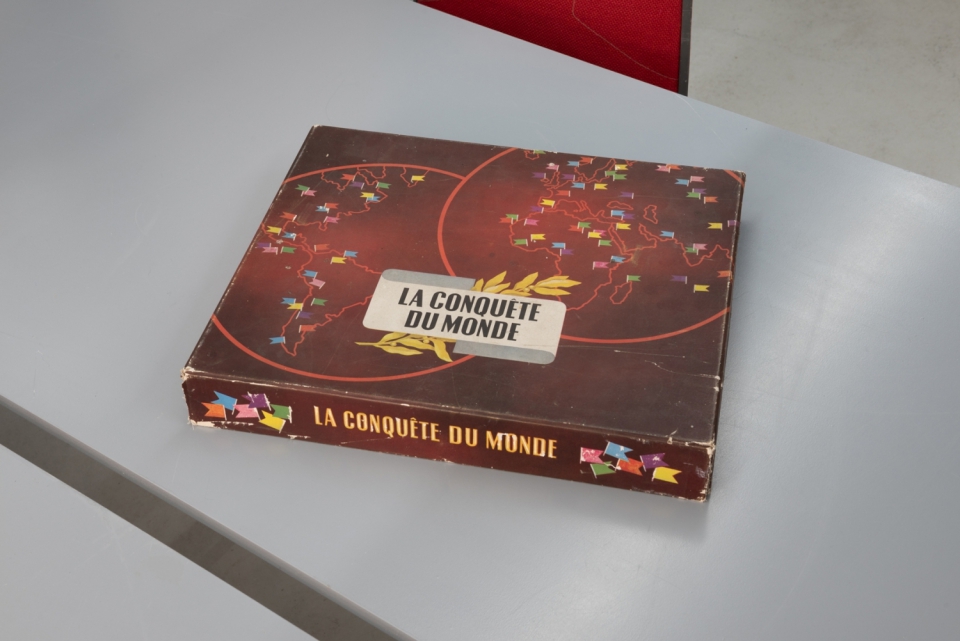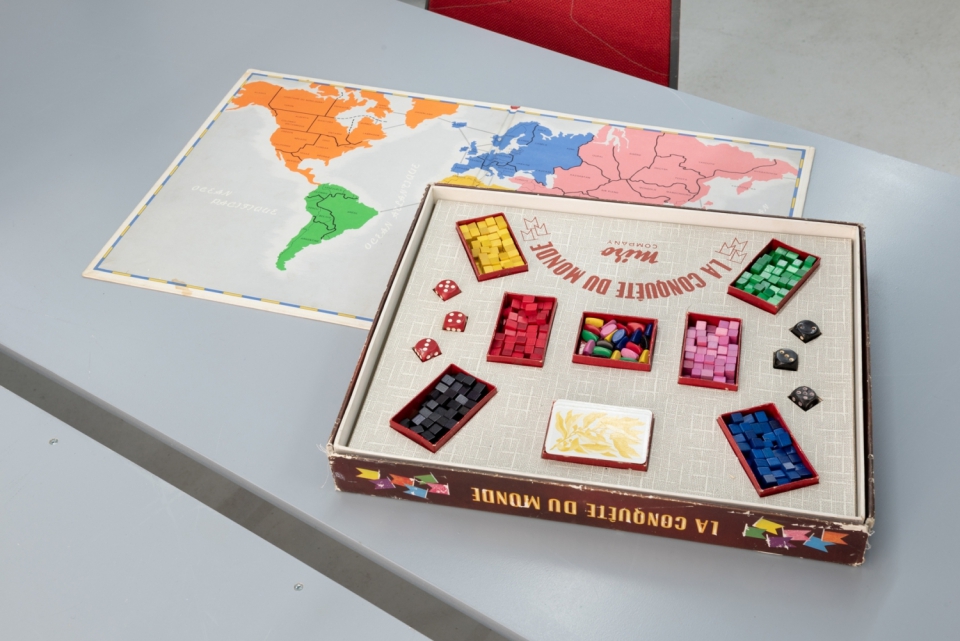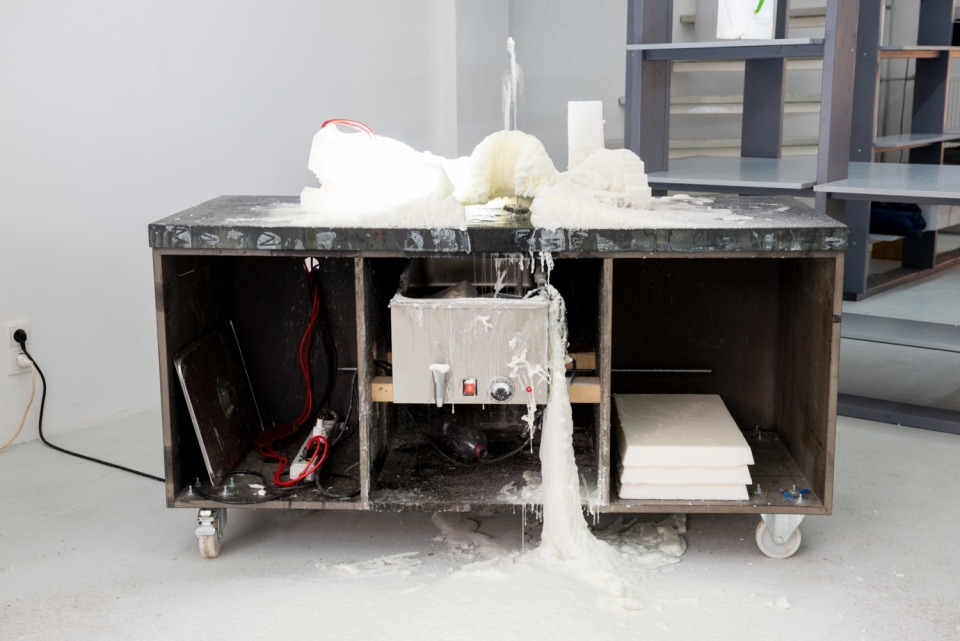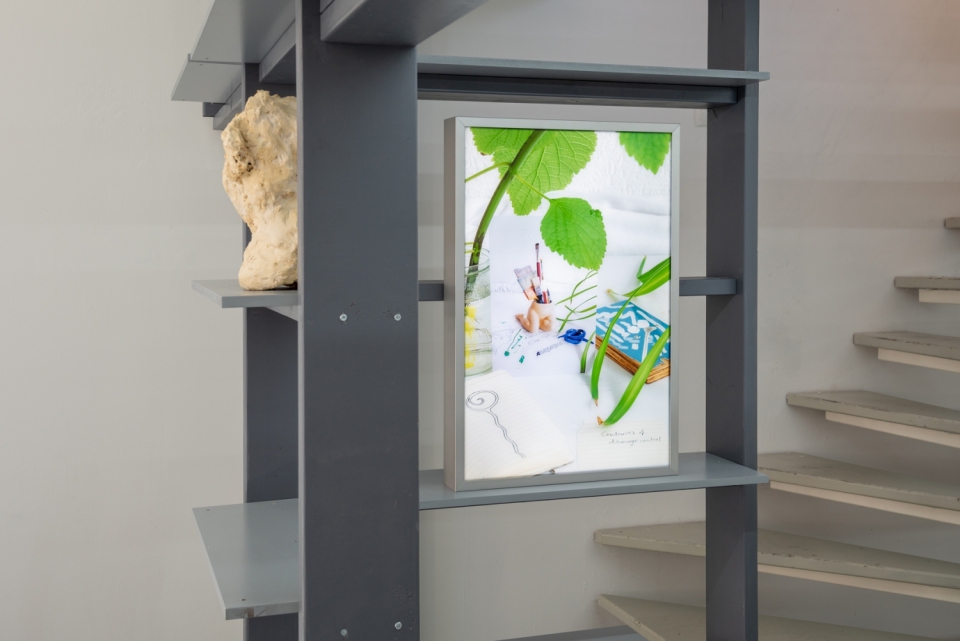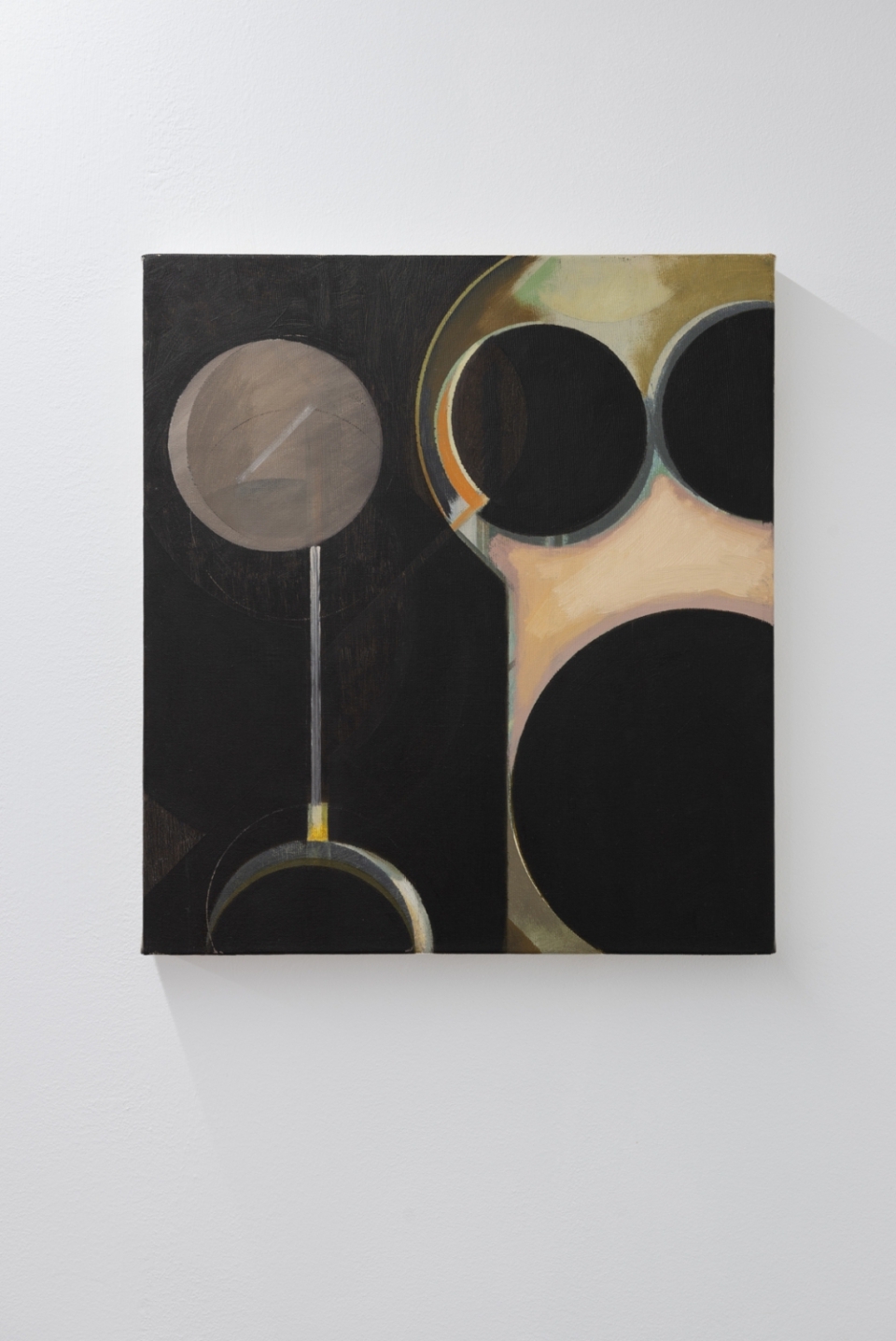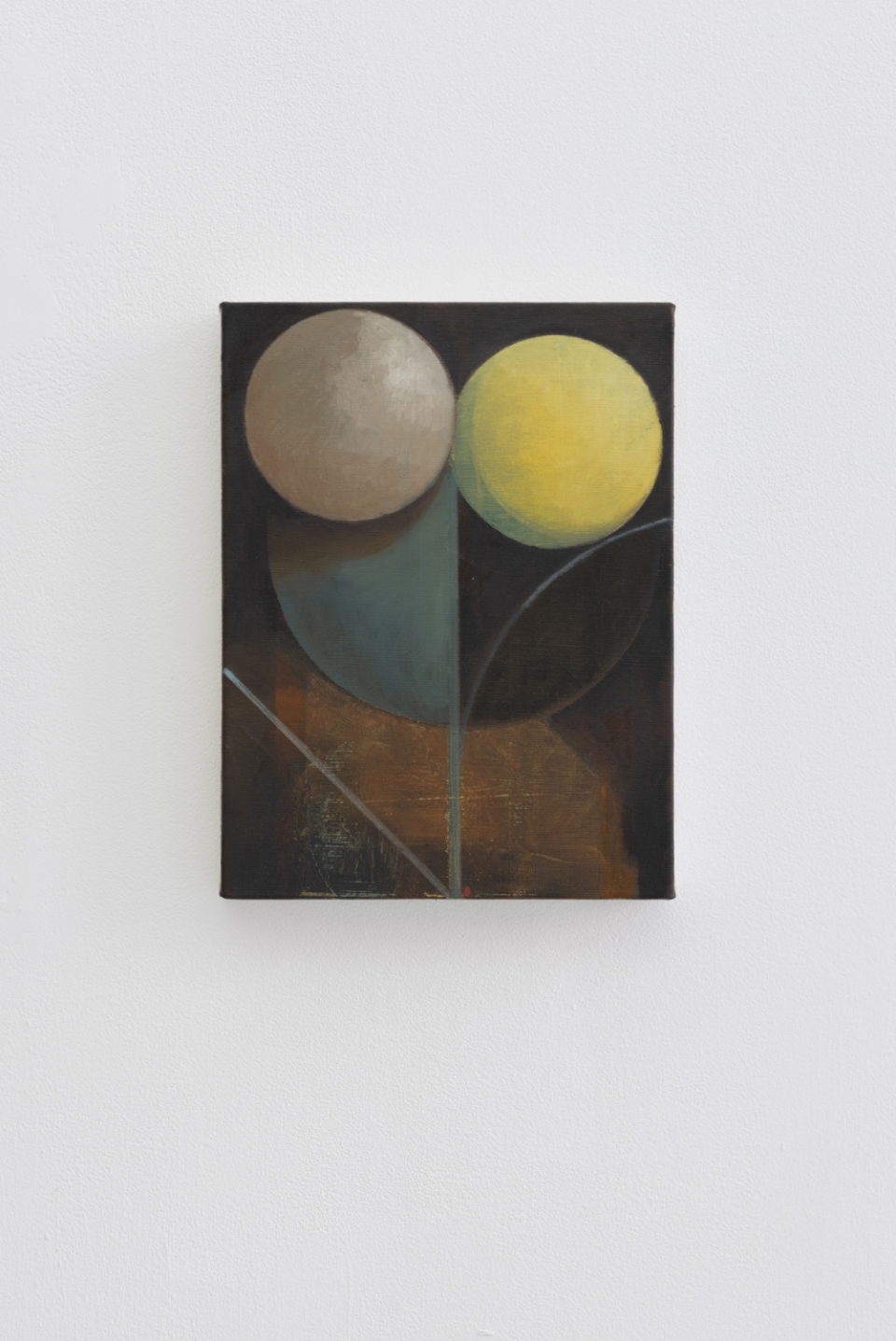Part 2: Natural Selection
05.02.2022, 18:30 – 22:00
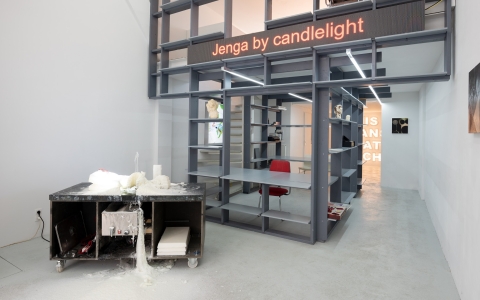

Exhibition view Part 2: Natural Selection, February 2022, Rib. Photo: Lotte Stekelenburg
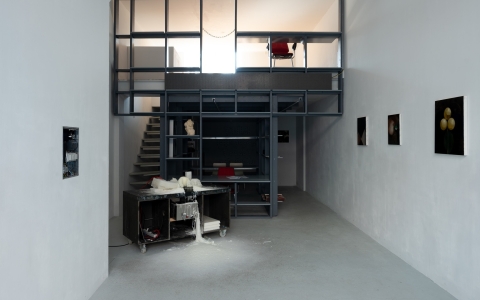

Exhibition view Part 2: Natural Selection, February 2022, Rib. Photo: Lotte Stekelenburg
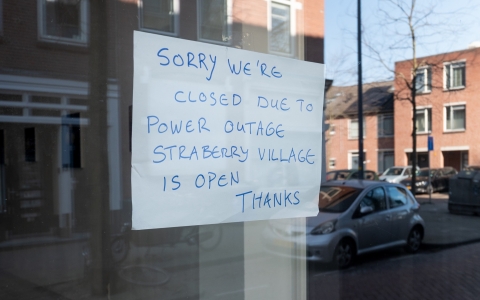

Blackout shop window sign, Part 2: Natural Selection, March 2022
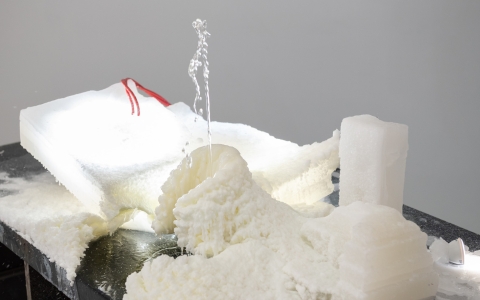

Kianoosh Motallebi, From a Marvelous Faucet (detail), 2022
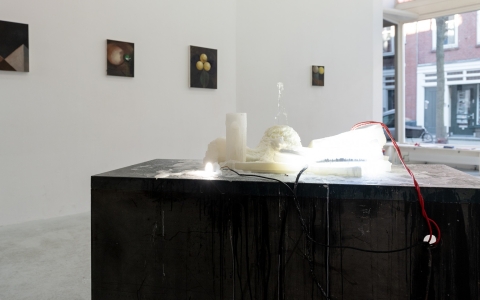

Exhibition view with works by Shahin Afrassiabi and Kianoosh Motallebi, February 2022, Rib. Photo: Lotte Stekelenburg
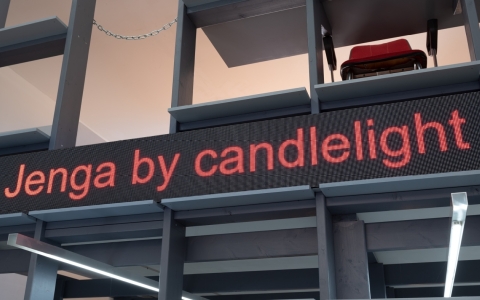

Mathew Kneebone, Power Relations (detail), 2021 in scenography by Olivier Goethals. Photo: Lotte Stekelenburg
With new works by Marije de Wit, Shahin Afrassiabi, Eléonore Pano-Zavaroni, Mathew Kneebone, Susannah Wood and Kianoosh Motallebi.
Performance by Susannah Wood starts at 19:30
Live broadcast from San Francisco streamed on Ever Widening Circles by Ash Kilmartin via Radio Worm
Following the introduction of The Last Terminal: Reflections on the Coming Apocalypse in September and Part 1: Survival of the Fittest: the big toe of little big man in November last year, we continue our journey with Part 2: Natural Selection in February 2022. Coinciding with the lockdown, several long blackouts befell us during the holiday, perhaps signaling this year’s cadence. In the program, we gradually add new works and replace some of the existing ones building a narrative that evolves whilst we are rethinking our pathways and future.
From a Marvellous Faucet
In Part 2: Natural Selection, we introduce a new work by artist Kianoosh Motallebi titled From a Marvellous Faucet. This work is an outcome of our conversations about the current state of one of the protagonists in the program: Lamorisse’s crashed helicopter at the Amir Kabir dam in Karaj.
There is now a rickety helicopter suspended over the lake. It is allegedly, at the very spot Lamorisse’s helicopter got entangled into electrical cables and fell into the lake. There are two versions of the origins of this wrecked helicopter. In one account, the helicopter is the actual one that was salvaged from the bottom of the lake, and in the other, it is a mock-up. This somewhat odd dangling memento mori got us thinking in terms of monuments and accidents, liquids and collisions, finality and continuity. We got interested in accidents or collisions as moulds. Like when a car collides into an object and its metal deforms in accordance with the shape and qualities of the thing it has collided into. Whenever we see a wreckage, of any sort, we are drawn to its details, how the bends and kinks may have been formed. There is so much more detail in a wreck than in its original. We find ourselves absorbed in looking at it whilst imagining it reconstructed. It is a thinking process reminiscent of how we conceive sculpture as a practice.
Motallebi takes this phenomenon as the basis of a new sculptural work, embedding a lamp into paraffin which gradually melts it. This liquified paraffin is then pumped out of the solid object, appearing as a paraffin fountain elsewhere then landing into a hot bath. At the margins, the paraffin solidifies and gets once again integrated into the object. This process continues for at least a year, perhaps producing electrical charge and short circuits due to its attraction of environmental dust, threatening to compromise Kneebone’s work which itself throws the program into an operational uncertainty.
The Story of a Disaster Foretold
We ring in the New Year with a foretelling of the future—a parallel reality steeped in uncertainty and speculation. The Story of a Disaster Foretold is a premonition composed of language drawn from news headlines, oracular literature, musings, and visions blended together in three acts by Éléonore Pano-Zavaroni, Mathew Kneebone, and Susannah Wood. The artists’ collaboration is founded on a shared interest in projection, a theme central to their individual projects exhibited at Rib (Afspraak Future and Power Relations) and inspired by Lamorisse’s premonitions of dying in the Caspian Sea, several kilometers north of the actual site of his death.
The work is voiced by Susannah Wood who is a Bay Area actor, playwright, and—in a previous life—was a radio editor and reporter for the City News Bureau in Chicago. Contingent on California’s suspect electrical grid, The Story of a Disaster Foretold will be broadcast live from San Francisco to Rib on Ever Widening Circles, a radio program by artist Ash Kilmartin via Radio Worm. The story will be introduced with a musical prelude by the Rib Staff Band, Linus Bonduelle, and Maziar Afrassiabi.
Damage control
For Part 2: Natural Selection, Marije de Wit introduces a new photographic work presented in a Lightbox. Part of a larger body of recent photographic works, it signals her departure from sculpture to centralize and document working in the studio with photography. Work at the studio consists of surrounding herself with photos, objects, and drawings, that in the process of making sculptures would have been subordinate to the artwork’s final outcome. The photos are still-life testimonies of compelling assemblages that appear to her in the studio, which she then further stages into a scenery. The photos dissolve distinctions between making and finding, stating and questioning, abstraction and daily life, and advocate an intuitive logic and ambiguity to aim for more and broader modes of communication and comprehension.
Mirror and Luz Aberrante
We introduce two new paintings by Shahin Afrassiabi titled Mirror and Luz Aberrante and remove Tronie (Thomas Houseago) and Ruin the world. In a recent conversation with Shahin Afrassiabi, he said that he feels as if all of his experiences are distilled into these paintings, of life and of art. When looking at his paintings, it is not difficult to see that they have landed safely and calmly, as if after a long messy journey that is both personal and historical and arriving only with what is necessary to continue.
Shahin Afrassiabi was born in Tehran. He studied art at Goldsmiths University in London. He works in Andalucia, Spain. Selected solo exhibitions include Paintings 2016–2018 at Soy Capitán, Berlin (2018), Radical Substance at Soy Capitán, Berlin (2015), Theory of Life at MOT International, London (2012), Subject to Form at Limoncello Gallery, London (2010). Afrassiabi’s work was part of several group shows, such as Been Caught Stealing at Kunsthalle Exnergasse, Vienna (2014), Showcase Preview at South London Gallery, London (2004), Transmission Gallery, Glasgow (2002), Early One Morning, Whitechapel Gallery, London (2002), and ICA, London (2000).
Olivier Goethals studied Architecture and Urban Development. He is working simultaneously as architect and artist. In his wide practice he researches the connection between space and consciousness. Olivier made spatial interventions and artistic installations for venues, such as Het Nieuwe Instituut Rotterdam, Z33 Hasselt, Extra City Antwerp, Be-Part Waregem, SMAK Ghent & Palais De Tokyo Paris. Previously he worked as a freelance senior architect for De Vylder Vinck Taillieu (2008–2016). Since 2010, he is teaching at the KULeuven Architecture Department. He was a guest critic at RU Ghent faculty of Architecture, LUCA School of Arts Experimental Studio and ETH Zurich faculty of Architecture. Goethals is in charge of the design and implementation of all spatial interventions for the art collective 019.
Mathew Kneebone’s practice is founded on research into uncertainties surrounding technology, often combining different histories, myths, and folklore. His work touches upon various media including drawing, electronics, writing, sound, and performance to reconfigure or re-contextualize certain technologies, exploring an ambivalent blend of past and present. His work has recently been exhibited at Kunstverein, Amsterdam; 019, Ghent; Extra City, Antwerp; and Cloaca Projects, San Francisco. His writing has been published in Trigger Magazine, OASE Journal for Architecture, The Bulletins of The Serving Library, Another World, Umwelten, among others. He has given talks and workshops at Minnesota Street Project, San Francisco; V2_ Lab for Unstable Media, Rotterdam; Central Saint Martins, London; Sandberg Instituut, Amsterdam; San Serriffe, Amsterdam; EKA Gallery, Tallinn; Sitterwerk, St. Gallen; UEL, London. He teaches at California College of The Arts, San Francisco, where he is thesis writing supervisor.
Kianoosh Motallebi (UK, 1982) is a visual artist based in Brussels. He completed his master’s degree at the Slade School of Fine Art in London. Subsequently he was a resident at the Rijksakademie van Beeldende Kunsten. Motallebi took part in The Physical Center (Guest Projects, London, presented by Yinka Shonibare), Erased Walls (Berlin) and Rijksakademie Open 2011. His work has also been shown at the Van der Mieden Gallery (Antwerp) and he was artist-in-residence at Very Real Time (Cape Town). In 2017 he designed the coin De Stelling van Amsterdam Vijfje 2017 Zilver Proof. He is currently part of the artist collective Level Five (Brussels).
Marije de Wit lives and works in Rotterdam. A selection of her recent activities are: artist talk in the context of artist in context, Netherlands Film Academy, Amsterdam; There Is So Much Thinking to Be Done, Wiels Project Space, Brussels; site-specific photo installation, Clermont-Ferrand (FR), thanks to Artistes en residence; and ESACM, VERY|BODY|TIME, edition of 25 posters, spread over free pasting places in Rotterdam.
Éléonore Pano-Zavaroni teaches art and art history at Esaaa (Annecy Alpes School of Art). She runs the art platform 5OU6ÎLES and the magazine Idoine and is one of the members of the scientific committee of the biennial Carbone, Saint-Etienne. Some of her exhibitions are Living Fair with Nayoung Kim, Changnyeong Bugok Spadium, South Korea (2019), Rendez-vous La Havane in Centro de arte Wifredo Lam, Cuba (2018) and Rendez-vous/Biennale de Lyon, Institut d’art contemporain, Villeurbanne (2017). She curated Eutrapelia, Back Lane West, Redruth, UK (2018) and published the monographic edition Entretien, Martial Déflacieux, Éléonore Pano-Zavaroni, Virginie Bobin, Stéphane Sauzedde, Esaaa éditions (2017). She is currently preparing a solo exhibition for next year at the Flaine Art Center and an artist’s book Rendez-vous.
Pano-Zavaroni has invited the following artists. In her words:
“Danaé Jérôme is a goddess who speaks cat. She is the intensity of the present. She radiates and connects. She presents herself as a designer or an artist, depending on the context and the person she is talking to. She acts, with no sense of hierarchy between situations. Fully there. Fully with—whether in a neighbourhood knitting association, a textile design project, or an art residency.
Anchored in the cosmos, Jérôme Tillié makes experimental music, original graphic design, unexpected exhibitions, the reception of a hotel. He has a sense of display and presentation that is as sensitive as it is subversive in its sincerity. This is beauty. In Jérôme Tillié‘s sentences, words appear where we least expect them and vice versa.
When I met Akim Pasquet, he was looking for ways to extract energy from stones. I then discovered his strength in creating art spaces where everyone is welcomed and finds their place. He federates and explores, driven by questions of affect and energy, their circulation in intimacies and in ensembles. He is a curator, artist, teacher and director of the Limbes art space and the Carbone Biennial.
Fabrice Croux, attentive, makes piles, stacks. He states that art is to increase the sensitive and understand in a non-verbal way. He eats things, techniques, and other edible foods. He bathes in time, sprinkled with magic and strangeness, making objects that are other.
Romain Bobichon has an experimental painting practice. I often have the impression that he creates an infinite painting that develops in many dimensions. It is a relationship to the world rather than a medium. He produces things that can be manipulated, things that can be thought of with the body. Moreover, he also makes music or, with other acolytes, a series of fiction.
Ash Kilmartin does a lot of collaborations; she has a sense of staging and dramaturgy. She is a storyteller, sculptor, performer, radio broadcaster, gardener, chef, and runs Life.
Maziar Afrassiabi is an artist, he makes poems in spite of himself, is attentive to dreams. He unfolds an artistic practice, and a way of thinking with others, through his curatorial practice, mainly at Rib, which he founded and directs. For some time now he has been making beautiful sculptures, between the Merzbau and Valentine Schlegel.”



